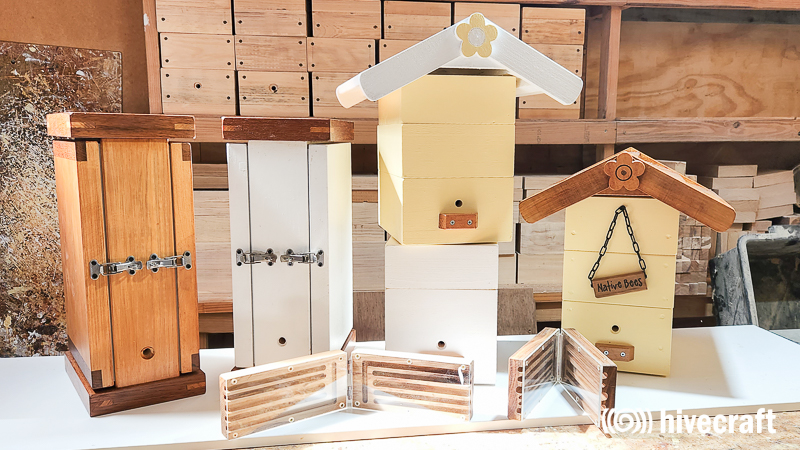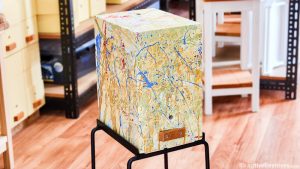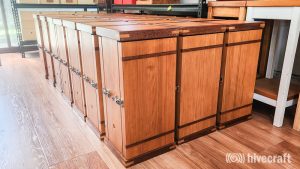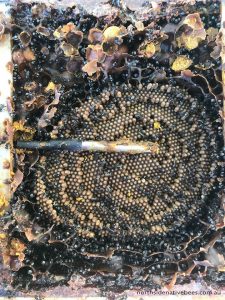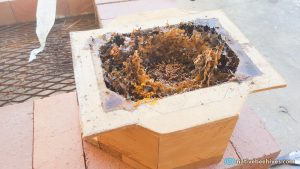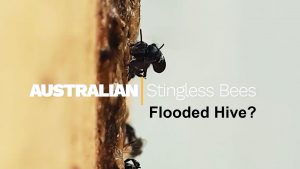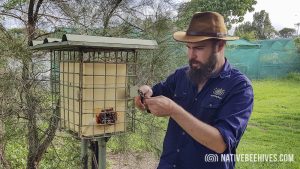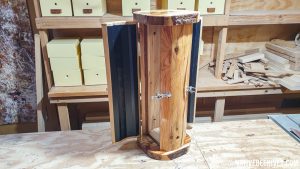Some Solitary Bees like Resin Bees will create their nest in small tunnels or grooves and for most of us it’s a mystery what happens inside the tunnels. This observation block allows the nests to be easily viewed without causing any disturbance or damage. These are great for education, research, photos and video.
Originally created July 2019.
Using Cypress I’ve routed grooves 160mm long in a 200mm wide block. I then covered the surface with some clear acrylic sheet and placed a hinge on the back.
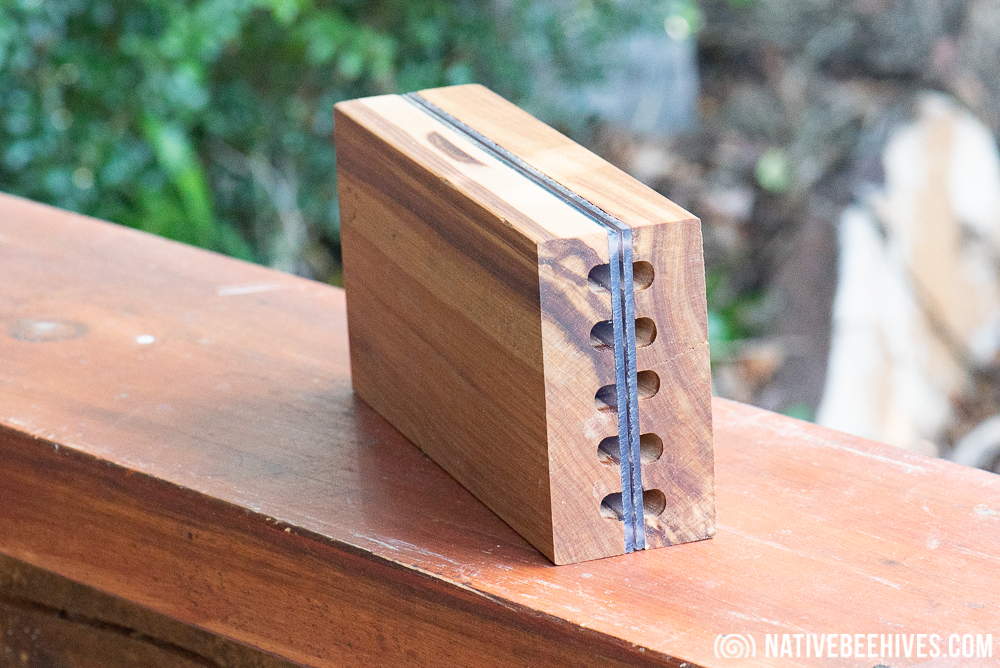
When it’s in place the blocks are closed against each other. The block could be placed flat/horizontally or vertically. I would suggest once the bees have started creating cells that you make sure it’s returned to the same location and position. The cells may be affected if you change the position.
When you want to have a peek you can open up the blocks without disturbing the nests…
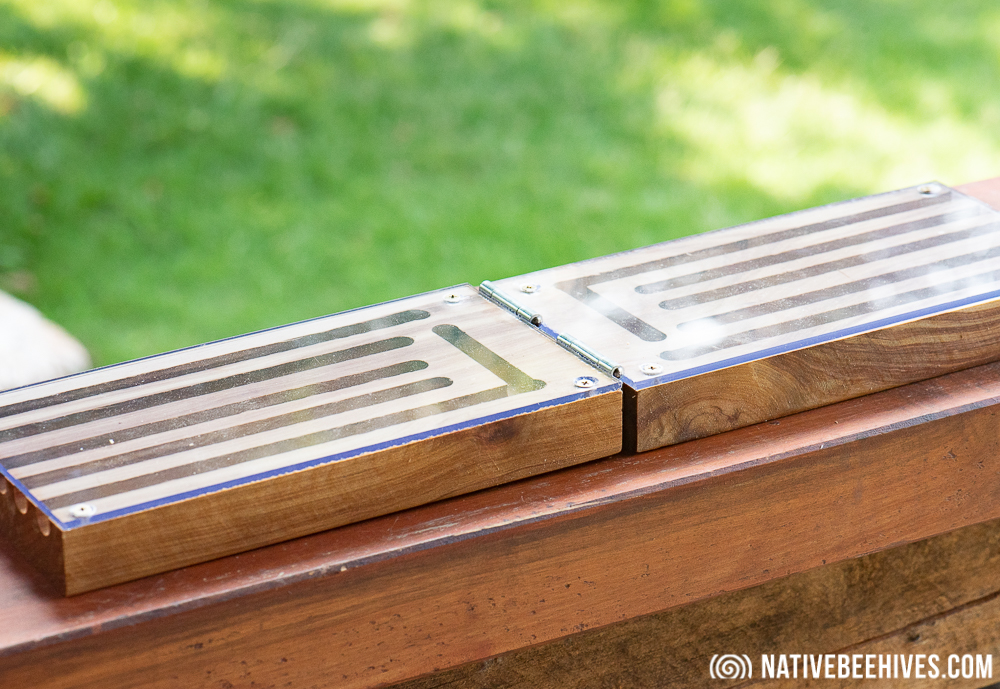
Update photo below: 29/09/2019
Below: Some activity!!
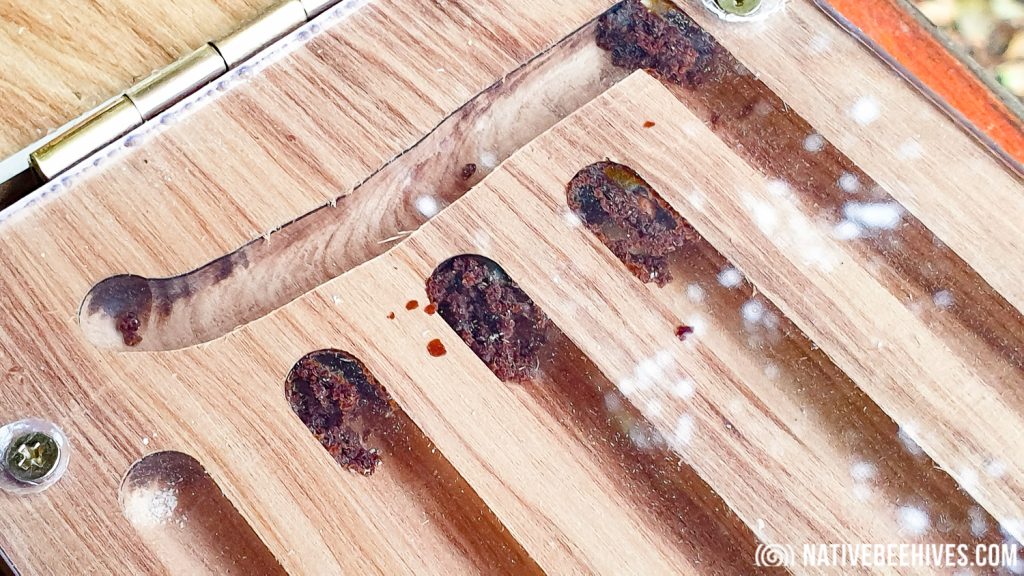
Update photo below: 04/01/2020
Below: There’s two different species of Resin Bee using this block. Fire Tail Resin Bees (larger) and Megachile deanii (smaller).
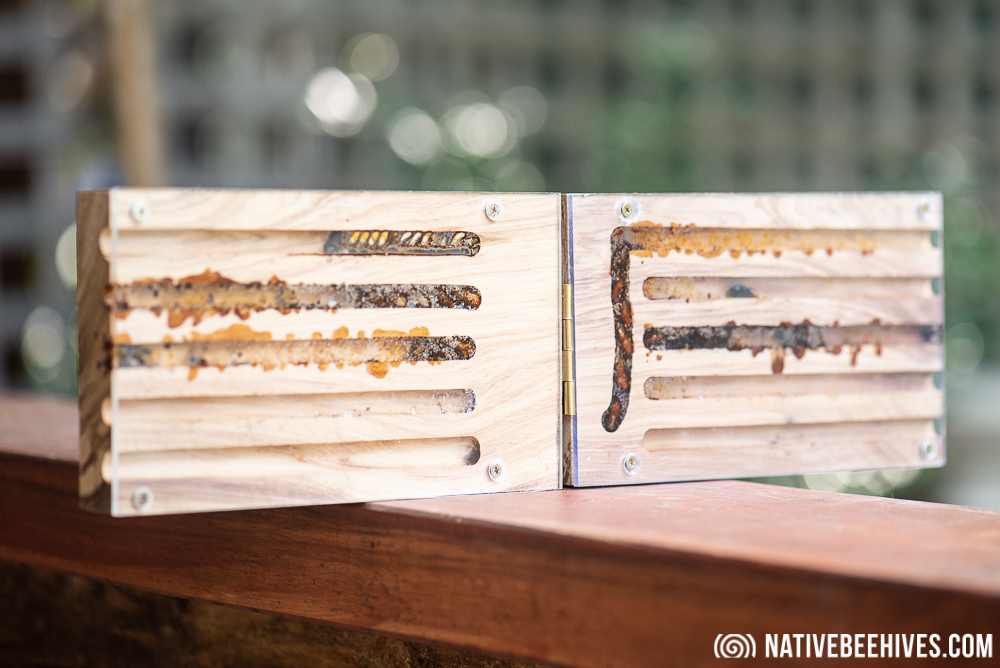
Below: The smaller Resin Bee, taking up less space in the tunnel and leaving an access track underneath the brood cells / larvae.
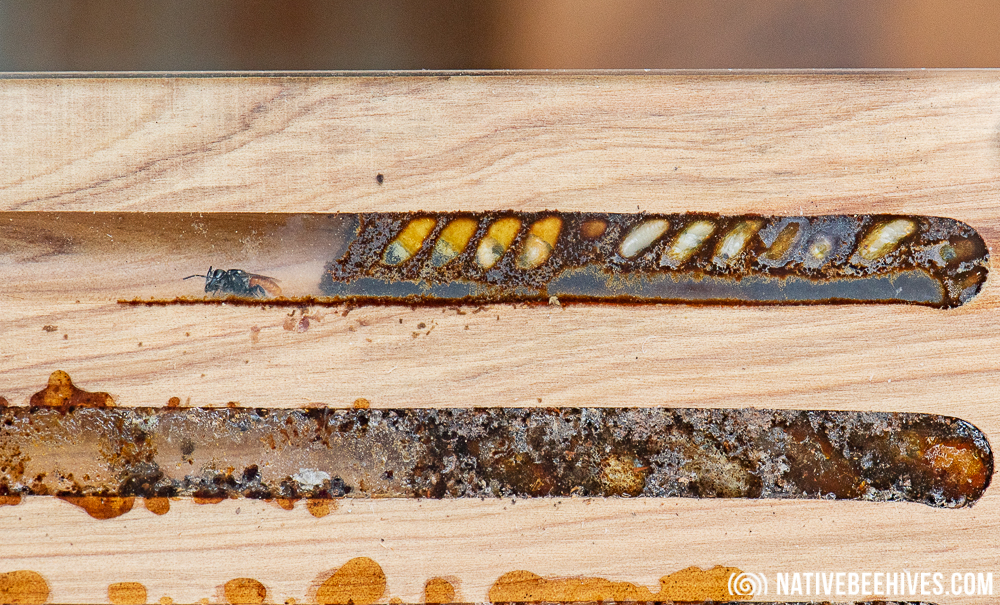
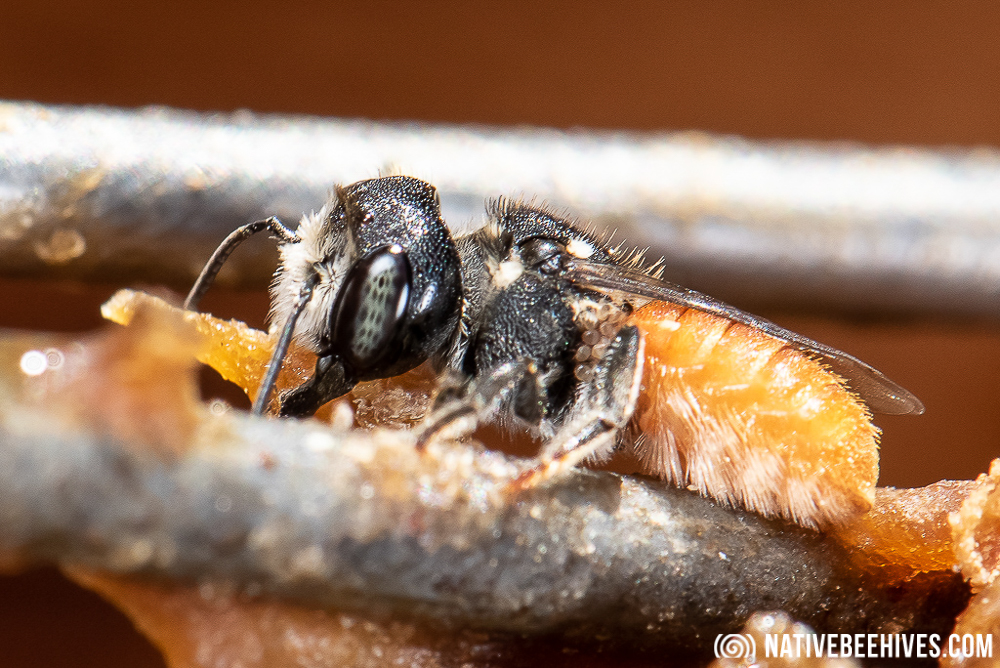
Below, you can see the different development stages between the cells. Species is Megachile deanii, a small resin bee.
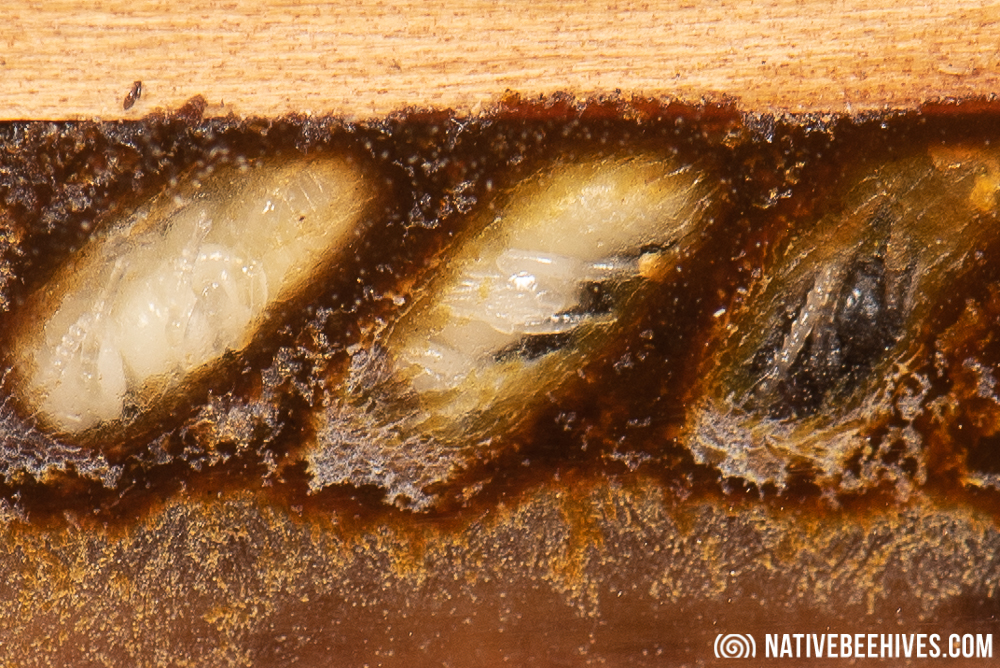
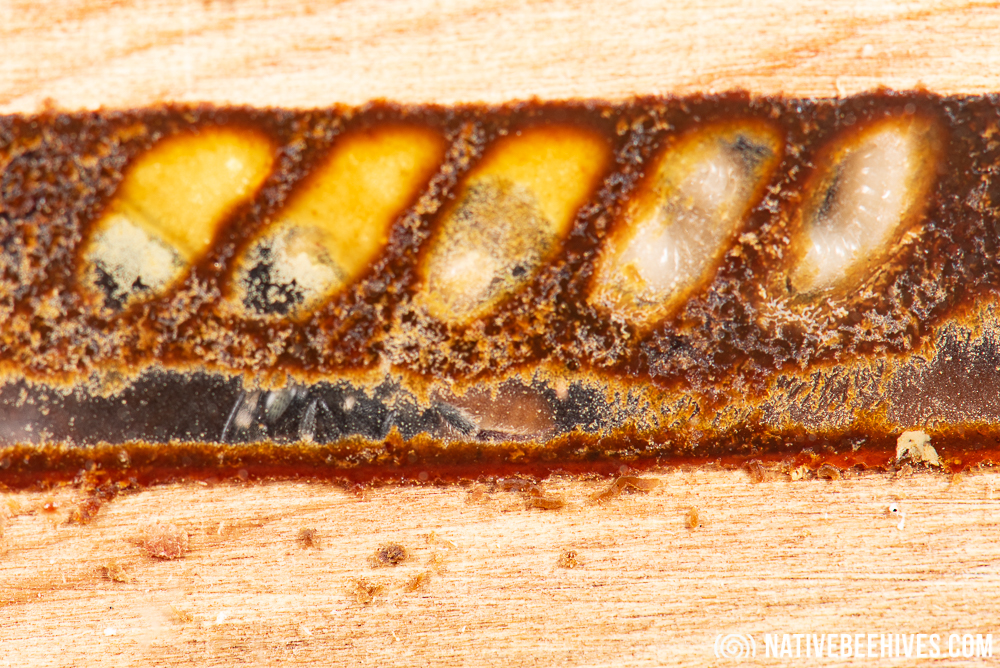
Update: 28/11/2022
As a trial I have made a slight modification to the latest blocks by adding a top and bottom plate. This reduces the amount of light getting in. The resin bees don’t seem to be effected by the light but it may help with other species.
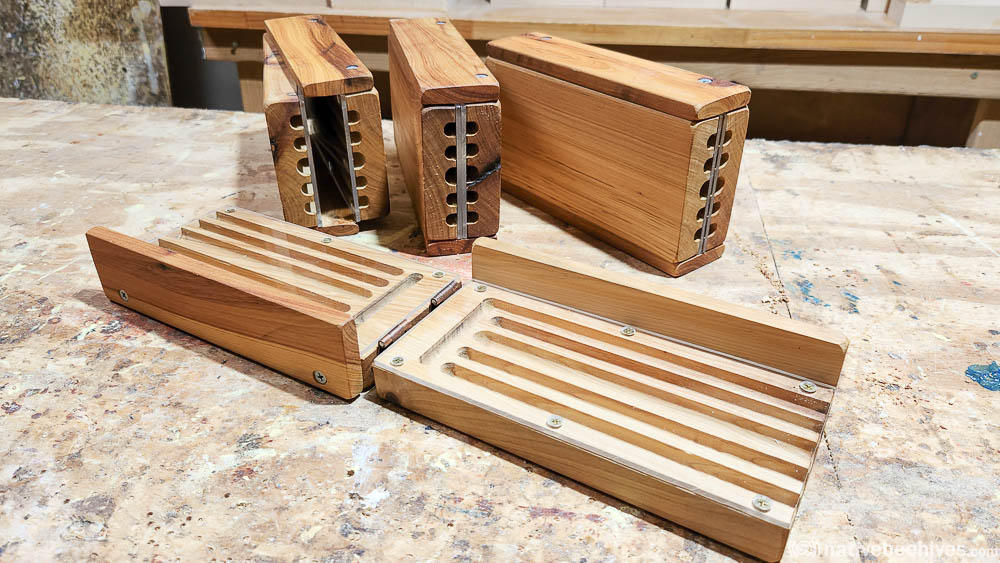
Update: 01/11/2023
For the latest batch I’ve used four different hole sizes. 6mm, 8mm, 10mm, 12mm
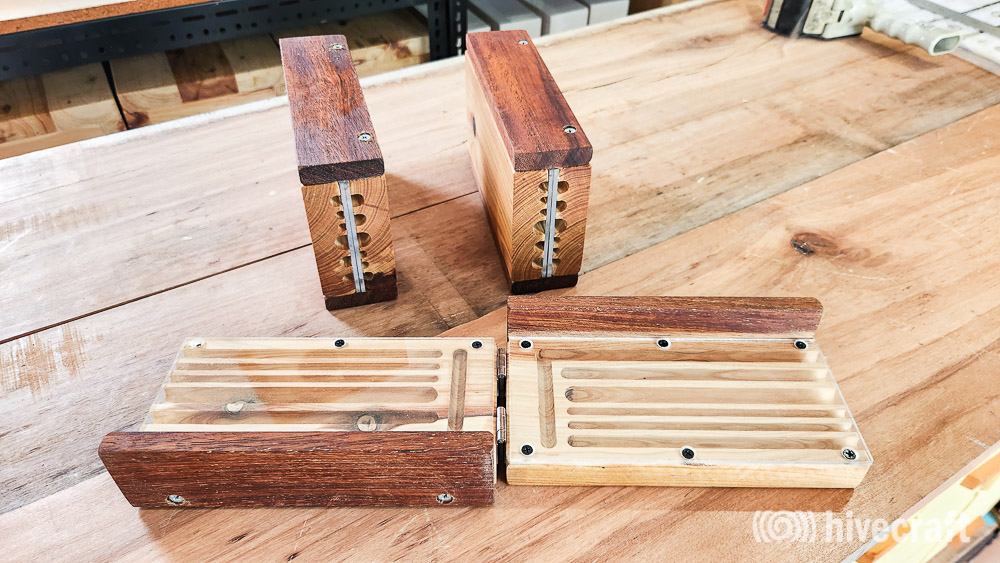
These can be purchased at www.hivecraft.com.au
